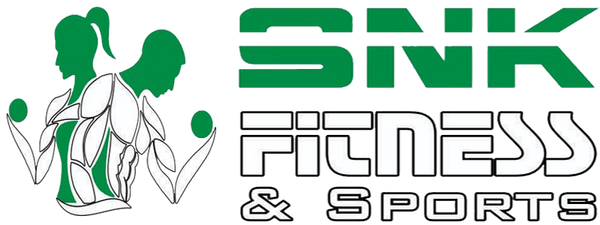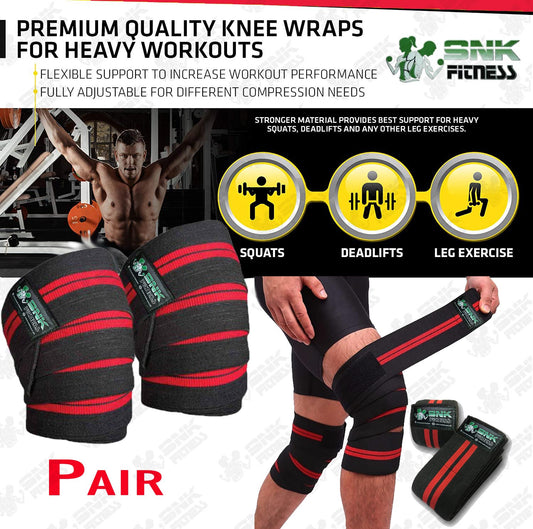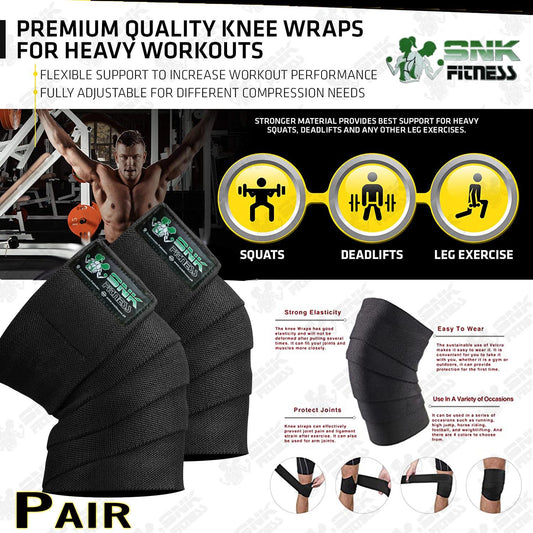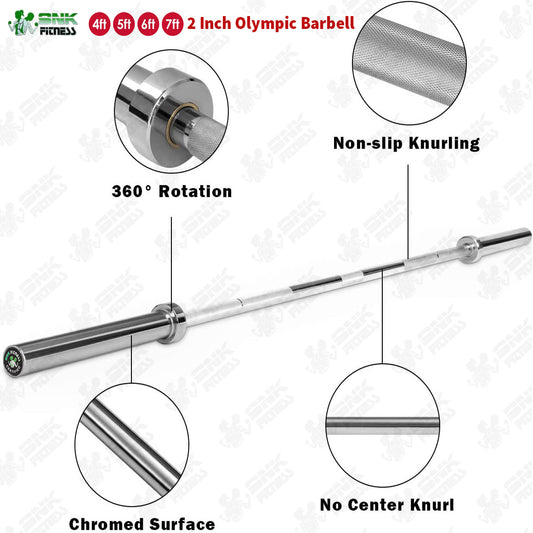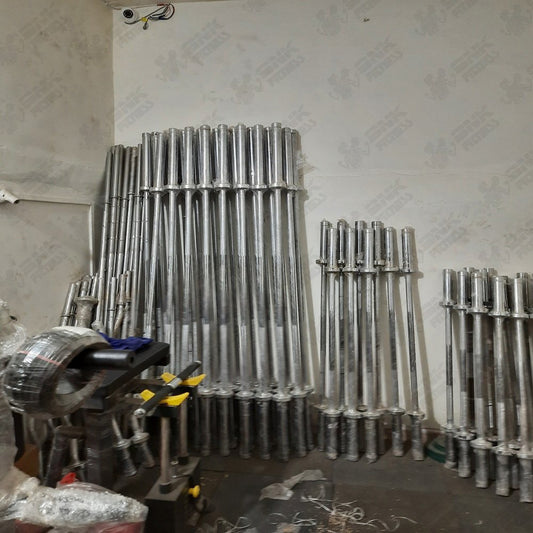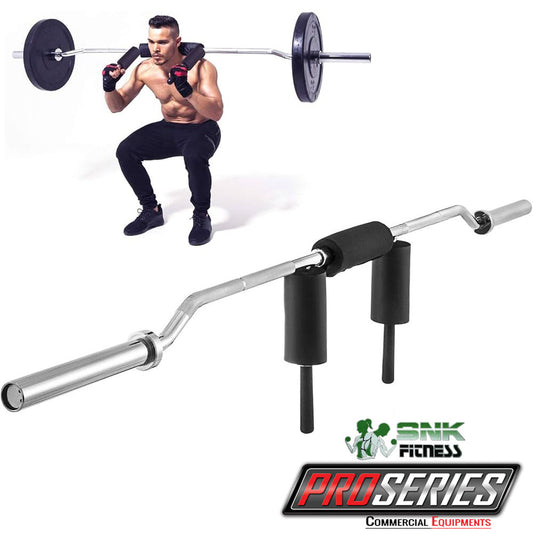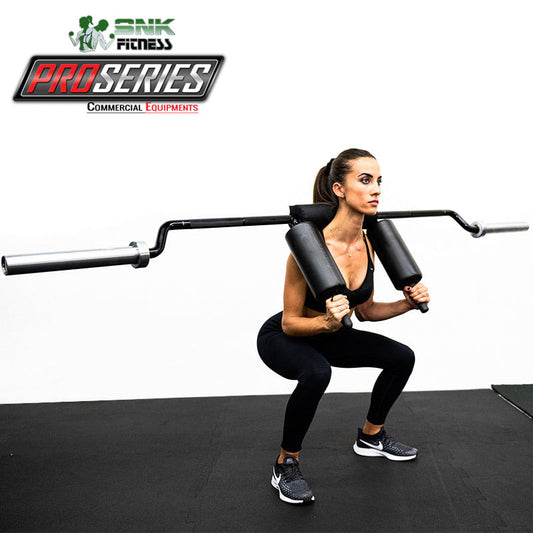-
Knee Wraps (Pair) for Cross Training WODs, Gym Workout, Weightlifting, Fitness & Powerlifting - Knee Straps for Squats - For Men & Women- 80 inch - Compression & Elastic Support - SNK FITNESS
Regular price Rs.999.00Regular priceUnit price / perRs.1,499.00Sale price Rs.999.00Sale -
Olympic Barbell Bar 2" inch Gym Weight Lifting Rod 4FT 5FT 6FT 7FT
Regular price From Rs.5,999.00Regular priceUnit price / perRs.7,999.00Sale price From Rs.5,999.00Sale -
Olympic Safety Squat Bar Commercial | SNK FITNESS Olympic Barbell with Comfortable Neck Pad
Regular price Rs.19,999.00Regular priceUnit price / perRs.24,999.00Sale price Rs.19,999.00Sale
Collection: Squat
Essential Squat Equipment & Accessories:
-
Barbell:
- Olympic Barbell: The standard bar used for squats, typically weighing 45 lbs (20 kg). It's essential for back squats, front squats, and other barbell-based squat variations.
- Safety Squat Bar: A specialty bar with padded shoulders and a cambered design, like the SNK Fitness Pro Series Safety Squat Bar, which distributes weight more evenly and reduces strain on the shoulders and lower back.
-
Squat Rack or Power Rack:
- Provides a stable structure to safely perform squats. A squat rack holds the barbell at an adjustable height, while a power rack includes safety bars or straps to catch the barbell if you fail a lift.
-
Weight Plates:
- Olympic Weight Plates: These plates are used with an Olympic barbell to add resistance to your squats.
- Bumper Plates: Made of dense rubber, these are ideal for safely dropping the barbell after Olympic lifts or heavy squats.
-
Lifting Belt:
- A weightlifting belt helps stabilize the core and protect the lower back during heavy squats by increasing intra-abdominal pressure. It's especially useful for powerlifters and those lifting maximal loads.
-
Squat Shoes:
- Also known as weightlifting shoes, these have a raised heel that improves ankle mobility, allowing for a deeper squat while keeping your torso more upright. The hard sole provides a stable base for heavy lifts.
-
Knee Sleeves:
- Made of neoprene, knee sleeves provide support and warmth to the knee joints, helping to reduce the risk of injury and improve performance during squats. They also add some compression, which can enhance blood flow and reduce swelling.
-
Wrist Wraps:
- Used to stabilize and support the wrists during heavy squats, particularly with the front squat, where wrist flexibility is crucial.
Optional Squat Equipment & Accessories:
-
Resistance Bands:
- Can be used around the knees to encourage proper knee tracking during squats or to add resistance to bodyweight squats.
-
Squat Pad or Barbell Pad:
- A foam or gel pad that wraps around the barbell to cushion the neck and shoulders during back squats, reducing discomfort. However, proper bar positioning should minimize the need for this.
-
Chalk:
- Lifting chalk improves grip by reducing moisture on your hands, which is useful when gripping the barbell, especially during heavy squats.
-
Trap Bar:
- Also known as a hex bar, it's an alternative to the traditional barbell for performing deadlifts or trap bar squats, which can reduce the strain on the lower back.
-
Leg Press Machine:
- While not a squat accessory per se, the leg press can complement your squat routine by allowing you to target similar muscles with a different movement pattern, particularly useful for hypertrophy training.
-
Box:
- Used for box squats, this accessory helps to improve squat depth, teach proper form, and enhance explosive power. Boxes are also useful for plyometric training.
-
Hip Circle or Mini Bands:
- These can be placed above the knees during squats to engage the glutes more effectively and promote proper knee alignment.
-
Foam Roller:
- Used for pre- and post-workout muscle recovery, foam rolling helps to release tension in the muscles, improving flexibility and reducing soreness.
-
Safety Straps or Spotter Arms:
- These are adjustable straps or arms attached to a power rack to catch the barbell if you fail a lift, providing an additional safety measure during heavy squats.
-
Squat Box or Squat Depth Trainer:
- A tool to help lifters ensure they reach the desired depth in their squats, useful for beginners learning proper squat form or advanced lifters fine-tuning their technique.
Using the right combination of these accessories can help you perform squats more effectively, safely, and comfortably, whether you're a beginner or an advanced lifter.
